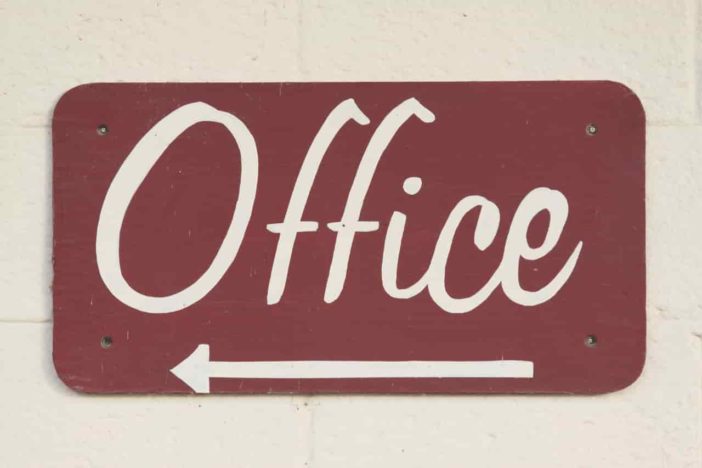Office signs are important. They can warn. They can guide. They can inform. And they can reassure. People tend to trust a sign to tell them the truth, so they’re important.
However, when a new office space is being designed and fitted, signs can be among those non-obvious aspects that are easily overlooked, but in many cases, they are as important as the furniture, the equipment, and the layout.
At a base level, office signs can play a large part in a workplace’s character. They can indicate formality, humor, organization and give added emphasis to what goes on in a place.
From the signage that brands the outside of a building to the signs that are hung indoors a company’s image, values and ethos can be reinforced so that both employees and visitors get a feeling about and know where they are.
The fact is that office signage can make a big difference.
People’s initial impressions are quickly formed and tend to stick. As author and journalist Malcolm Gladwell pointed out in his book Blink: The Power of Thinking without Thinking, our intuition is not a magical property that comes from our mind’s depths. It is produced by carefully thought out design and its associated rules and principles.
This is among the reasons why buyers tend to make decisions relying on their first impressions and snap assessments. As a result, what visitors see when they enter a shop, office, or meeting room can set the stage for how a business is perceived overall.
For some sectors, like law and finance, reliability and trust are what are of paramount importance, and potential clients can decide in a split-second whether or not a firm is dependable.
Signage that impresses can make a business appear well-established and permanent. Lack of quality signage can underpin the idea that a business is a mere ‘pop-up’ that has just emerged and may disappear as quickly.
What professionally designed and installed signs can do is convey the message that a business is firmly established and believes in a good presentation. High-quality signage can inspire and reassure.
Brand equity
When it comes to marketing and branding, it’s well-established that typography, color, and design play a prominent role in how a business is perceived. Using these elements in signage is a powerful and influential medium for encouraging people to have the right attitudes.
Working every day in an environment that uses dark blue colors and formal fonts will evoke a different mood to one that employs bright red and fun lettering. There is a wealth of research into color and its effect on our psychology: from our perceptions to how we taste.
Finding the way
Of course, one of the most important jobs of signage is to help visitors to find something, whether it’s a building or how to navigate the interior.
It’s no fun being lost in an unusual space. Signs can help. Wayfinding signage assists people to find their way around a place efficiently and quickly. Safety signage can act as a reminder for tasks to be carried out in the correct manner.
Signage provides opportunities, whether for branding, guidance, information or for entertainment. It’s a powerful way of reiterating a company’s values and ethos. There is no shortage of locations for placing a sign. Signs represent a shrewd investment for any company.





